Blake's 7 - The Classic Audio Adventures: Vol 5.3: Restoration - Part 3
Written by Trevor Baxendale, Steve Lyons & David Bryher
Produced and directed by John Ainsworth
Stars: Michael Keating, Jan Chappell, Steven Pacey, Yasmin Bannerman, Alistair Lock, Evie Dawnay, Hugh Fraser, John Green, Rebecca Crankshaw, Sheila Ruskin, Paul Darrow
Big Finish Productions, 2020
"How long do you think it will take?"
"Not too long, I hope. We need Avon."
"Yes, I think you're right."
Tarrant and Cally, Blake's 7 - Restoration: Imperium
Previously on Blake’s 7 … Kerr Avon is missing, feared dead, after the destruction of the Hyperion research station. The Liberator, now under the control of a hostile extraterrestrial artificial intelligence, has returned to Federation space but is following its own flight path that seeks to locate (and destroy) the last remnants of the System, the starship's original creator. And the remaining crew of the Liberator – Cally (Jan Chappell), Vila (Michael Keating), Tarrant (Steven Pacey) and Dayna (Yasmin Bannerman) – are contemplating what to do with stowaway and former Hyperion station scientist Selene Shan (Evie Dawnay). What is her agenda? And is she friend or foe?
The third and final boxset in the Restoration saga of the Blake’s 7 Classic Audio Adventures marks the beginning of the end of Big Finish’s mostly brilliant recreation of the classic TV series over the past 10 years – at least in the format we know and love. Certainly, it is the first instalment in the series to be missing three of its most beloved (and sadly departed) leads: Paul Darrow (Avon), Gareth Thomas (Blake) and Jacqueline Pearce (Servalan). Darrow passed away between the making of volumes 2 and 3 of Restoration, with Avon caught in a cliffhanger position. This leaves the remnants of the original Series C cast – Chappell, Keating and Pacey - and Bannerman to carry the flame in Darrow’s absence – and all things considered, they do an outstanding job, no doubt assisted by great writing.
The first two volumes of Restoration rather slowly set the scene and built up the momentum for the climactic tales in this set (only two episodes – Vol 1’s Abandon Ship and Vol 2’s Hyperion – stood out tallest in the first eight). Volume 3 is, in spite of Avon’s disappearance, the best and the most consistent of the three volumes in the trilogy. All the episodes are well written and performed, and the production qualities are – as can be expected of Big Finish – first-rate.

If there is a weak link, then it is possibly the first episode Parasite, which picks up from the events of Hyperion, as the crew have to cope with the loss of Avon and reluctantly trust Selene whose understanding of System and Quonar technology is their best hope of regaining control of the Liberator and its flight computer Zen (Alastair Lock). Parasite intercuts between events on the Liberator and the distant ocean world of Tronis, whose subterranean/underwater inhabitants are in peril as the mysterious power source which has sustained them for centuries breaks down.
The Tronis sub-plot is archetypal Blake’s 7 (reminiscent of TV episodes like Deliverance, Power and City at the Edge of the World), where the Liberator crew visit a society that is on the brink of collapse, thanks to a decline in ancient technology that it has never fully mastered or understood. We only meet two inhabitants of Tronis – Primus Valren (Trevor Littledale) and his acolyte Zoraya (Becky Wright) – but their exchanges are highly entertaining, thanks to Wright’s child-like enthusiasm and excitement, coupled with a hint of mischief, and Littledale’s schoolmaster-like discipline, paternal disapproval and scholarly disposition.
In many respects, Trevor Baxendale’s script bears some superficial similarity to The New Age, the corresponding opener in Restoration Vol 2. In that tale, the Liberator crew encounter a former System world - Eloran - whose population attempts to eschew technology altogether. Any hope, though, that the Liberator crew could salvage the System technology they need is sabotaged by Avon's contempt for the local populace and results in needless death. Something similar threatens to reoccur in the climactic stages of Parasite but this time the Liberator crew is able to resolve the misunderstanding. Cally and Vila's presence (in spite of Vila's pretence for panic and fear of the worst) has a vastly different impact on the denizens of Tronis than their counterparts on Eloran. You can't help but think that Avon's absence in the circumstances is a positive.
Failsafe, by Steve Lyons, is probably the best episode of the boxset. It effectively opens mid-story, as Tarrant and his arch nemesis General Mordekain (John Green) recover from blackouts to find themselves chained to each other and Dayna manacled to the loathsome yet dying Terran Federation President (Hugh Fraser). To complicate matters, the quartet, along with Selene and Orac (also voiced by Alistair Lock) are stranded in an abandoned underground mine, cut off from their ships, and besieged by the local rebels. Mordekain is suffering from amnesia, having no recollection of the past 24 hours before his blackout, and outright refuses to entertain Tarrant's claims that he has been conspiring to overthrow his President, whose ailing condition threatens all their lives (the President still carries an explosive in his ribcage primed to go nuclear the moment his heart stops beating).
What follows is a fight for survival, as the protagonists and antagonists painstakingly climb their way back to the surface, amid much squabbling, philosophising and pointed one-liners (as their chains link the wearers' nervous systems, creating mutual pain and suffering if one harms the other, Dayna at one point flippantly threatens to shoot a body part on the President she doesn't have!).
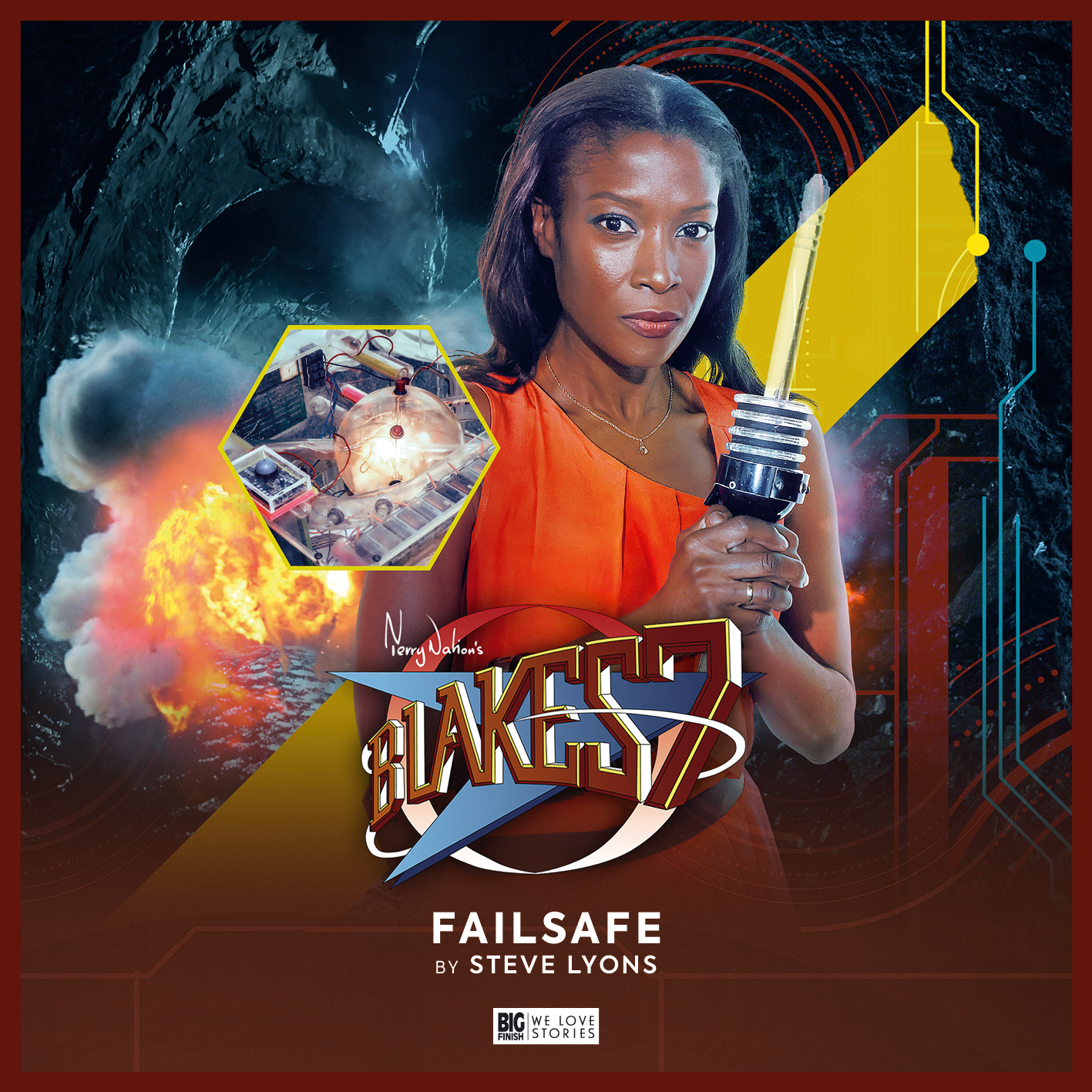
The closing stanza of the episode sees the President achieve a tactical victory over the Liberator crew while also revealing important information about Avon's welfare post-Hyperion. But what is most revealing is the epilogue which completely reframes the President's and General Mordekain's relationship. Failsafe marks (barring the return of the character in future BF B7 projects) the closure of Mordekain's storyline. As flawed as Mordekain is, there is an innate duty and honour to his character that dates as far back as his debut in Crossfire: Paradise Lost - when we learned he refused to fight for Servalan in the Intergalactic War and was determined to restore the President to his rightful place for the good of the Federation. However, it is clear by the end of Failsafe that Mordekain is (quite literally) another tool of the President and he has inadvertently paid a massive personal price in his bid to help restore the Federation to its former glory.
Reunion also marks the final appearance of Zeera Vos (Rebecca Crankshaw), whom script writer David Bryher introduced in the instalment Fearless, part of the first Crossfire boxset. The Liberator, still under the control of the Quonar AI, returns to the very scene where the starship was originally discovered in the Season A episode Spacefall - the sector of space neighbouring the former Federation penal colony Cygnus Alpha. While in that region, the Quonar-controlled Liberator clashes with another Quonar vessel that has been commandeered by Zeera (presumably after the events of Restoration: Damage Control) and is subsequently drawn back to Cygnus Alpha where Vila and Zeera solve an age-old mystery, and Tarrant and Dayna fight off a Quonar-controlled robot. Meanwhile, the AI on the Liberator mentally tortures Cally as it fights off Selene's attempts to regain control of Zen.
For the first time since Fearless, Vila and Zeera are forced to reconcile their differences which pre-date the first TV episode The Way Back. Both Keating and Crankshaw have some great dialogue and exchanges which border between blind panic and assertiveness (in Vila's case) and bravado and sheer paranoia (from Zeera). In the end, it's Vila's courage that shines through - not only does he strike a bargain with the Quonar AI that saves the Liberator crew but, thanks to Keating's portrayal, he is quite mature and comradely to Zeera, in spite of their troubled history. Again, like Mordekain, it's a shame to see the last of Zeera, a part which Crankshaw (as a strong fan of the TV series) really loved. However, perhaps there is still a place for the character in the broader B7 universe prior to the events of Fearless.
The boxset's concluding serial Imperium is the culmination of the Restoration saga and with so many loose ends to tie up, script writer Trevor Baxendale lives up to the task. He weaves together showdowns between the President and the Liberator crew, and the System and the Quonar, resolves Zen's and Selene's fates, and ultimately reunites the crew with Avon, whose brief but virtually seamless dialogue is lifted from the late Darrow's previous B7 recordings. Darrow's posthumous "return" as Avon is an eerily wonderful marvel of modern technology - even as a sound recording and very clipped lines, Darrow's voice really steals the show in the climax, reminding you just how much you have missed Avon's authority, keen intelligence and irony for much of the boxset.
This triumphant "performance" overshadows (if not eclipses) the reprisal of the System character Alta-One by the very still alive Sheila Ruskin - more than 40 years after her appearance in the Series B episode Redemption. There's nothing terribly remarkable about Ruskin's portrayal of Alta-One, she recaptures the emotionless demeanour of a System lackey as well as personifying the last vestiges of the System program which inevitably attempts to reassert its control over the Liberator. To be honest, Ruskin's participation is more an Easter egg for the fans, she probably didn't need to be in it at all - the part could have been just as capably performed by actors such as Abi Harris, Sophie Bleasdale and Ruth Sillers who had played Altas in previous B7 audio episodes. Indeed, the living person who really steals the show is again Hugh Fraser's President, who continues to confound the Liberator crew by cleverly anticipating their moves (albeit with Avon's and Orac's help). Fraser clearly enjoys playing the President - and it's great that the actor and character alike haven't entirely been wasted in BF's subsequent Worlds of Blake's 7 spin-off range.
Marking the end of the traditional episodic format as we so fondly know it, Restoration Vol 3 is a fitting way for BF to finish the B7 Classic Audio Adventures. Restoration as a whole is probably not as strong a storyline as the preceding Crossfire but nonetheless without the likes of Servalan to provide a worthy adversary, and eventually with the disappearance of Avon himself, BF still manages to produce an intriguing and at times compelling narrative.
Since the release of this boxset at the start of the COVID pandemic (February 2020), BF has (following a 15-month hiatus) successfully revamped the broader B7 universe by revisiting characters and concepts such as rebel fighter Avalon, the villainous and over the top Bayban the Butcher (portrayed once again by Colin Baker), the Terra Nostra crime syndicate and the Clonemasters. Each boxset has cleverly utilised B7 stalwarts in Keating, Chappell, Lock, Sally Knyvette, Stephen Greif and Brian Croucher. I'm uncertain how well these boxsets have been received by fans or how well they have sold (compared to the B7 Classic Audio Adventures) but I would certainly recommend that the President is entitled to his own series. As there is a whole backstory between Tarrant and the President that has been hinted at in previous instalments of the B7 Classic Audio Adventures, it is surely ripe ground for exploitation. BF has shown it has enough writers - of the calibre of Trevor Baxendale, Steve Lyons and Mark Wright - to make it work - and Stephen Pacey is unlikely to turn down the offer to reprise Tarrant.
While I will eventually give some of these spin-offs a go, it would nonetheless be in BF's interest to explore in the long-term how it can revive B7 proper for audio - both in terms of the Liberator's further adventures and even the exploits of Scorpio in Series D. This may mean recasting the three main leads - if not the entire ensemble of characters (something that was attempted unsuccessfully more than a decade ago by B7 Media). This is a tall order for sure but there is a new generation of actors out there that are not only capable of bringing Blake, Avon and Servalan back to life within the existing continuity but also honouring Thomas, Darrow and Pearce's rich legacy. BF has already resurrected sadly departed Doctors in its Doctor Who range with appropriate recasting, so why not the leads in Blake's 7?
It is only fitting that the final piece of dialogue to conclude the B7 Classic Audio Adventures is between the TV series' two leads - Darrow and Thomas - as the boxset segues way back to the conclusion of Series C and the B7 crew's eventual fate in Series D:
Avon: Are you sure about this, Orac?
Orac: Of course I am sure! The message can only be deciphered by your authority.
Avon: Let's hear the signal.
Orac: Playing now.
[Static, followed by a clearing of the signal]
Blake: Avon! This is Blake!.
Avon: Well, now ...
[Cue to end signature titles]
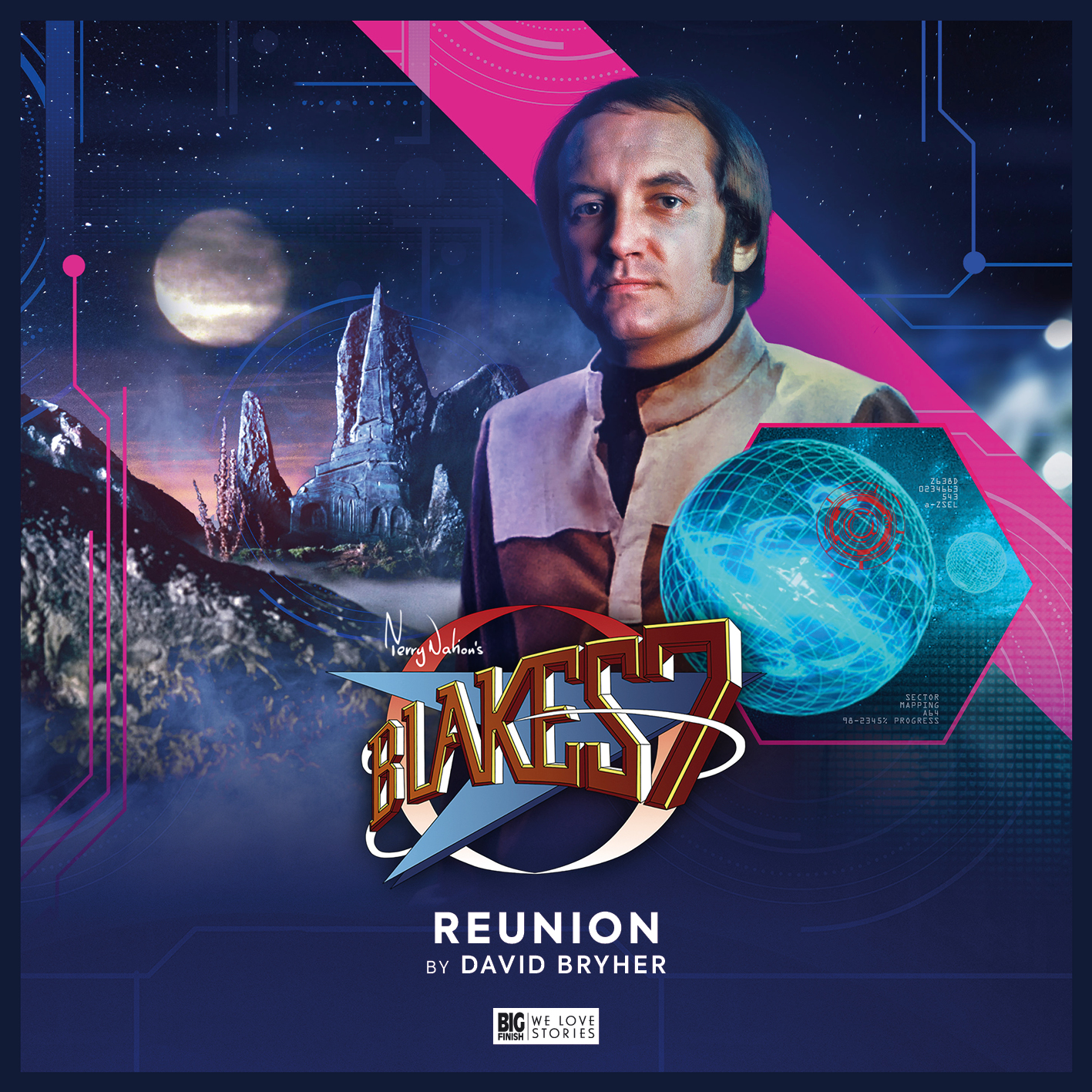
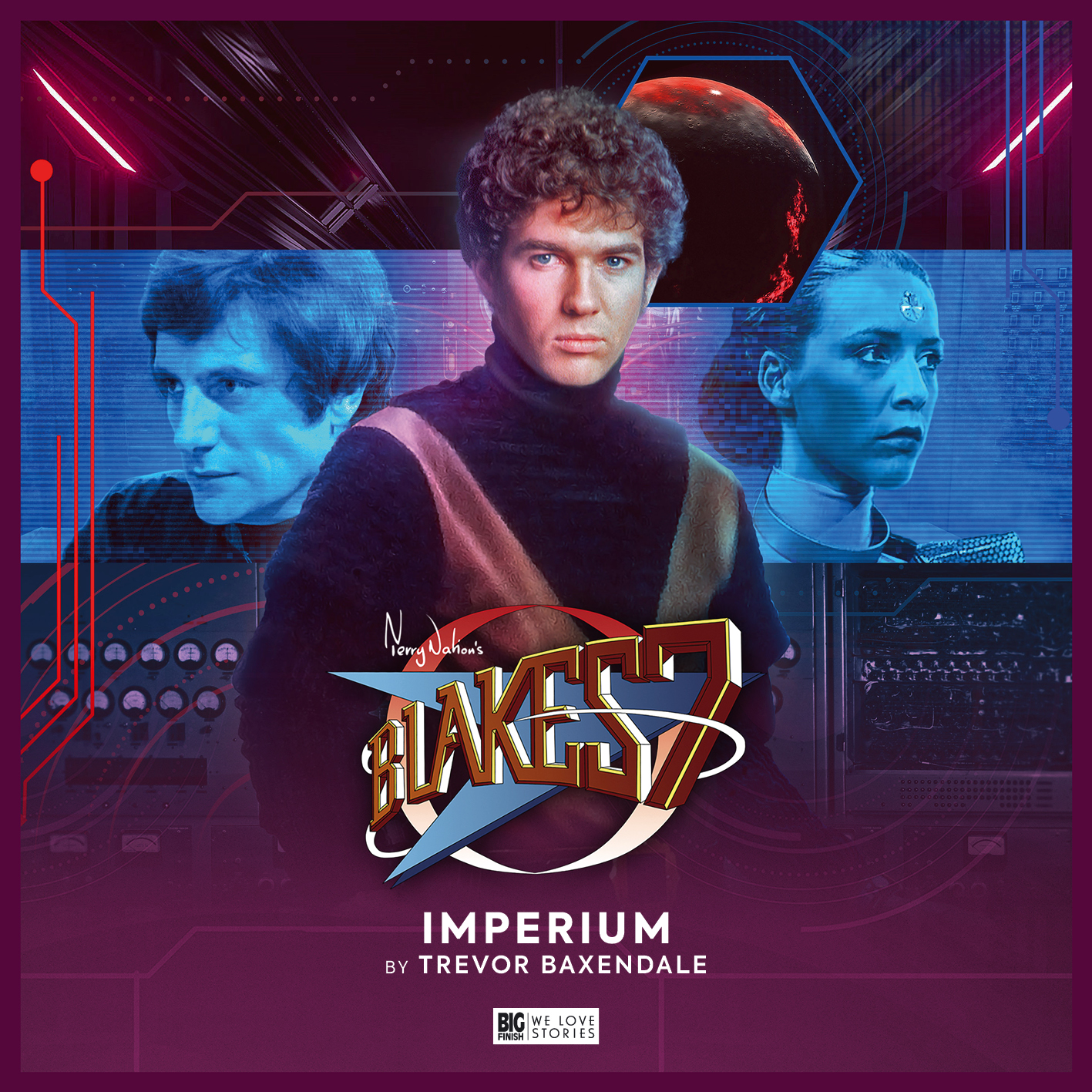
 The New Age is in many ways an almost "by the numbers", lacklustre B7 instalment. Aside from the opening scenes of the episode, which are set aboard the derelict remains of Spaceworld, the System's outer space stronghold, not much of note truly happens in the episode. To paraphrase Caroline Pickles in the CD extras, it's a story akin to "throwing away your mobile phone and growing carrots"! Given we're all currently living in isolation, perhaps the eschewing of technology for a simpler existence is more prescient than ever. However, given Wright's other B7 scripts, including Resurgence (which reintroduced the System), have been quite dramatic and action-packed, the change of pace - particularly for an opening instalment in a boxset - doesn't really work for this listener.
The New Age is in many ways an almost "by the numbers", lacklustre B7 instalment. Aside from the opening scenes of the episode, which are set aboard the derelict remains of Spaceworld, the System's outer space stronghold, not much of note truly happens in the episode. To paraphrase Caroline Pickles in the CD extras, it's a story akin to "throwing away your mobile phone and growing carrots"! Given we're all currently living in isolation, perhaps the eschewing of technology for a simpler existence is more prescient than ever. However, given Wright's other B7 scripts, including Resurgence (which reintroduced the System), have been quite dramatic and action-packed, the change of pace - particularly for an opening instalment in a boxset - doesn't really work for this listener.
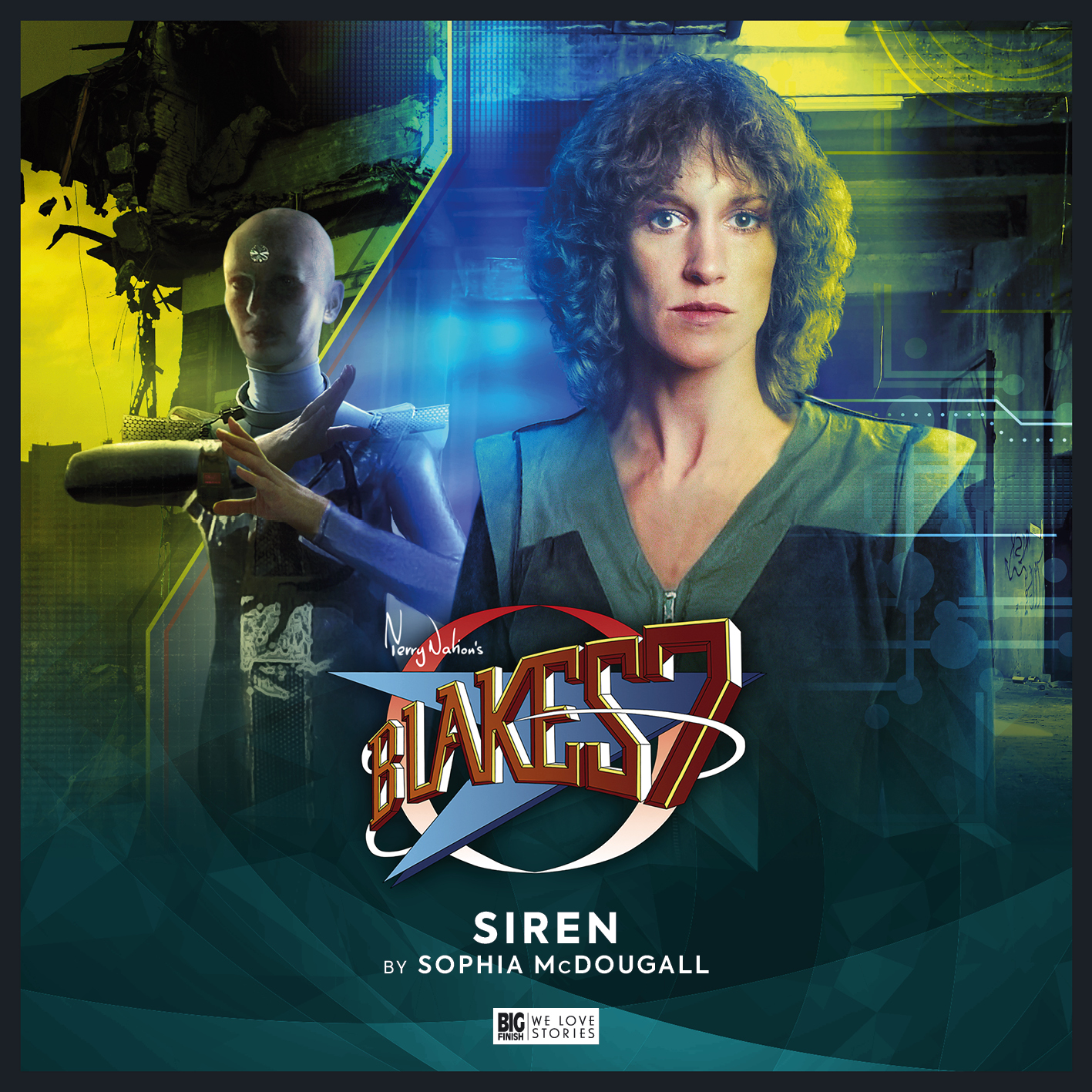 ucer John Ainsworth confirms in the CD extras that the original antagonist of the story was meant to be Servalan, with Shan relegated to a lesser role. Following the untimely death of Jacqueline Pearce, the character of Shan has assumed greater importance, and indeed appears in Restoration Vol 3 (implying Servalan's presence would have been even more keenly felt). Interestingly, I suspect Pearce's death had a two-fold impact on Baxendale's writing, as in Damage Control, the character of Zeera Vos also behaved like Servalan.
ucer John Ainsworth confirms in the CD extras that the original antagonist of the story was meant to be Servalan, with Shan relegated to a lesser role. Following the untimely death of Jacqueline Pearce, the character of Shan has assumed greater importance, and indeed appears in Restoration Vol 3 (implying Servalan's presence would have been even more keenly felt). Interestingly, I suspect Pearce's death had a two-fold impact on Baxendale's writing, as in Damage Control, the character of Zeera Vos also behaved like Servalan.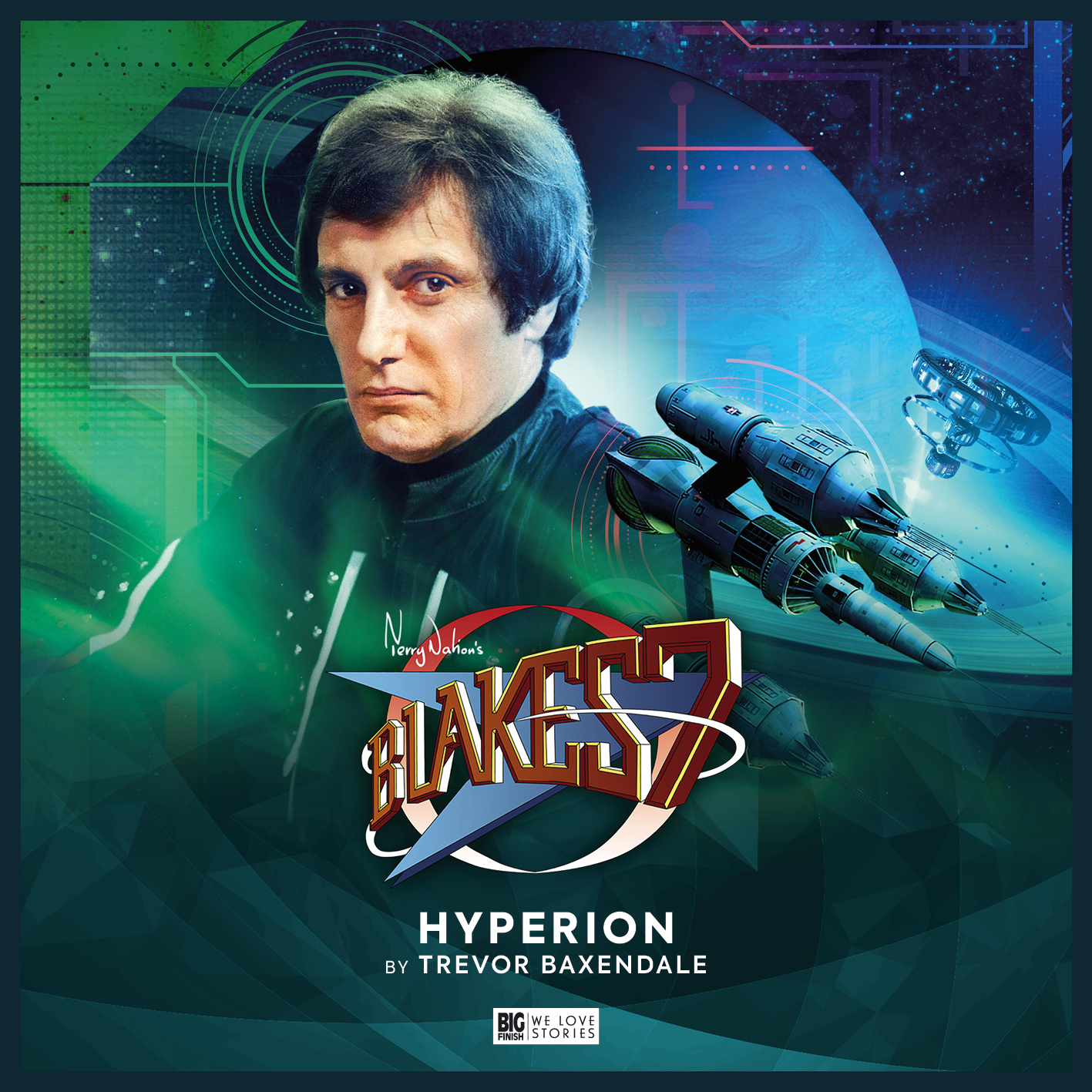 was forced to abandon the Liberator near Cygnus Alpha, way back in the second TV episode Spacefall. It will be particularly interesting to see how the final boxset works without Avon. Hyperion fortunately rescues what is mostly a lacklustre B7 boxset but the story outlines for Restoration Vol 3 hint that the overall story arc may yet provide a satisfying conclusion.
was forced to abandon the Liberator near Cygnus Alpha, way back in the second TV episode Spacefall. It will be particularly interesting to see how the final boxset works without Avon. Hyperion fortunately rescues what is mostly a lacklustre B7 boxset but the story outlines for Restoration Vol 3 hint that the overall story arc may yet provide a satisfying conclusion. Vila (Michael Keating) continues to be a subject of derision for nearly everyone in the Liberator crew – from Avon (who is typically disdainful of everyone) to Dayna (whose taunts are more playful and teasing than downright rude) to even Cally (who at one point is insulted when Orac [Alistair Lock again] suggests Vila could undertake certain repairs faster than she can!). That said, it becomes clear over the course of the episode that Avon and Orac (in their ruthlessly cold, logical ways) appreciate Vila’s skills and prowess. For instance, Avon suggests (in what is probably about as close as he’ll ever give to a compliment!) that Vila, because of his lockpicking skills, is best equipped to detect and overcome a series of booby traps in a series of underground tunnels. It's a point that actually plays to Vila’s ego just as he is on the verge of slipping into an all-out panic! In many ways, were it not for the various character dynamics that play out in this episode (which Baxendale captures extremely well, particularly in the dialogue), it is doubtful Damage Control as an episode would have much else to recommend it.
Vila (Michael Keating) continues to be a subject of derision for nearly everyone in the Liberator crew – from Avon (who is typically disdainful of everyone) to Dayna (whose taunts are more playful and teasing than downright rude) to even Cally (who at one point is insulted when Orac [Alistair Lock again] suggests Vila could undertake certain repairs faster than she can!). That said, it becomes clear over the course of the episode that Avon and Orac (in their ruthlessly cold, logical ways) appreciate Vila’s skills and prowess. For instance, Avon suggests (in what is probably about as close as he’ll ever give to a compliment!) that Vila, because of his lockpicking skills, is best equipped to detect and overcome a series of booby traps in a series of underground tunnels. It's a point that actually plays to Vila’s ego just as he is on the verge of slipping into an all-out panic! In many ways, were it not for the various character dynamics that play out in this episode (which Baxendale captures extremely well, particularly in the dialogue), it is doubtful Damage Control as an episode would have much else to recommend it.
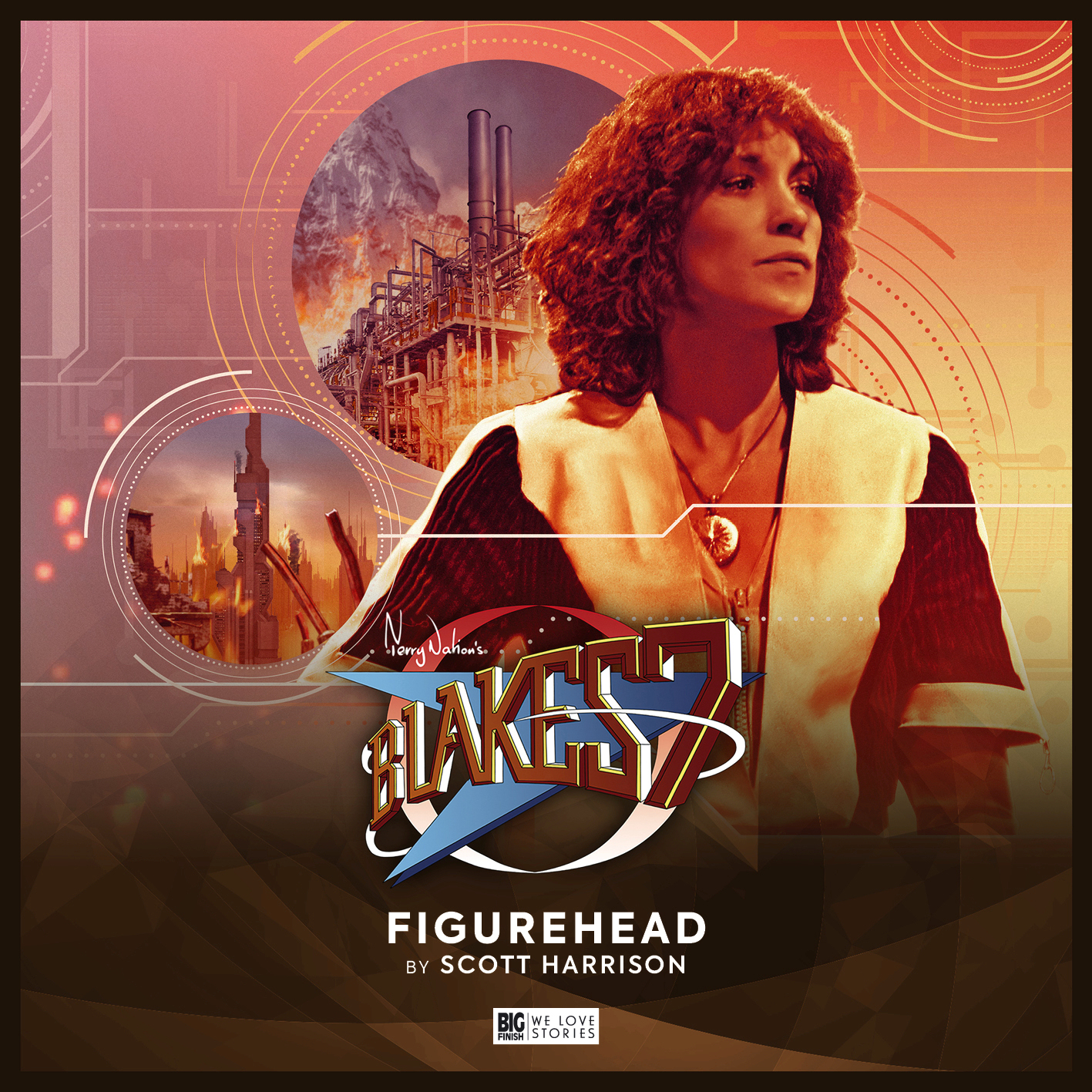 It’s interesting to note from Ainsworth’s comments in the CD extras that originally Avalon’s part in the serial was proposed for Blake, although that idea was abandoned because it would have been difficult to convey the character without any dialogue. Nevertheless, it would have been a bolder move than bringing back the uninspiring Avalon. Yes, Gareth Thomas is no longer alive, but Pacey proved in the final Crossfire set that he wasn’t above channelling his inner “Blake” – either he or even comedian Jon Culshaw would have been excellent choices to do a light impersonation that would have not been disrespectful to the deceased Thomas or the part of Blake.
It’s interesting to note from Ainsworth’s comments in the CD extras that originally Avalon’s part in the serial was proposed for Blake, although that idea was abandoned because it would have been difficult to convey the character without any dialogue. Nevertheless, it would have been a bolder move than bringing back the uninspiring Avalon. Yes, Gareth Thomas is no longer alive, but Pacey proved in the final Crossfire set that he wasn’t above channelling his inner “Blake” – either he or even comedian Jon Culshaw would have been excellent choices to do a light impersonation that would have not been disrespectful to the deceased Thomas or the part of Blake.




